Gentleman’s Magazine: a little gem packed with history…
December 27, 2013 by TimHughes · Leave a Comment
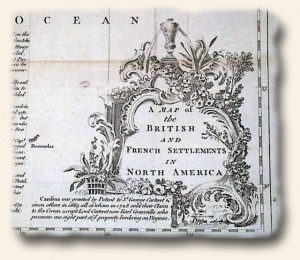
As dealers we have been very true to our focus on rare newspapers, and—for the most part—only newspapers. Yes, we have ventured into the occasional old document, pamphlet, colonial currency and the other items I’ve found intriguing, but otherwise we offer only historic newspapers.
But one big exception has been 18th century magazines. As is likely the case with most collectors of history, the over-riding aim is to find historic news reports dated as early as possible, and the availability of newspapers runs quite thin before 1760 (the London Chronicle dates to 1755 and is the single biggest source of period reports back to this period) if British titles are accepted, and only back to about 1787 if American newspapers are the only option.
It was many years ago that I discovered one of the best titles of the 18th century for period news reporting, and it wasn’t even a newspaper. It is a magazine. More specifically, “The Gentleman’s Magazine” from London. Having begun in 1731, its pages captured news reports concerning America which could never be found in period American newspapers, and rarely found in period British newspapers. From its earliest years “The Gentleman’s Magazine” printed reports on the creation of the colony of Georgia, the founding of the town of Savannah, with many issues mentioning James Olgethorpe. From 1736 are reports of William Penn laying out the city of Philadelphia, and the 1730’s has several reports of pirates operating in the Caribbean and the Atlantic, as well as famous highwayman Dick Turpin. Slave revolts in Jamaica, “Customs of the Jews” and other smaller reports from the American colonies round on the 1730’s.
The 1740’s have several items on the slavery issue which would be a topic of discussion on both sides of the Atlantic well into the 19th century. And relating to slavery are several issues of the 1770’s on famous slave/poet Phillis Wheatley.
There are early reports on the sport of cricket, and much on the Jacobite Rebellion including mention of “Bonnie Prince Charlie”. Other curious reports from the 1740’s include text on Handel and his “Messiah”, Ben Franklin mention with various electricity experiments, the death of astronomer Edmund Halley, the origin of the game of chess, and a curious item on a northwest passage to China through Canada. Military events in periodicals are never-ending, and this decade prints the text of the Treaty of Aix la Chapelle, among many other military events.
The 1750’s are highlighted by much reporting on the French & Indian War between the French & the British, with mention of Quebec, Crown Point, Fort DuQuesne and all the other major battle sites. Keep in mind that the American colonies were British possessions at the time so there was much interest in
“The Gentleman’s Magazine” has nice reporting on Ben Franklin’s lightening rod experiments, and there is also a terrific—although inconspicuous—mention of what would become known to all Americans as the Liberty Bell. Under the heading: “America” and with a “Philadelphia, May 10” dateline from 1753 is a report reading:

“Last week was raised and fixed, in the State-House Steeple, the great bell, weighing 2080 lb. cast here, with this inscription,
‘Proclaim liberty throughout all the land, to the inhabitants thereof.” This is how they reported the installation of what would become known as the Liberty Bell.England in reporting events relative to the colonies. A special feature of Gentleman’s was their very early mention of George Washington, a Major in the Virginia military in 1754 and 1755 when he lead others into battle in Pennsylvania. Such mention of Washington in an American newspaper would result in a price well beyond the budget of most collectors.
The 1760’s in “The Gentleman’s Magazine” are highlighted by the growing tensions between the colonies and England. The full text of the hated Stamp Act is found within its pages, and just a year later is found the formal repeal of the Stamp Act by the British King. Other Acts of Parliament harmful to colonial relations are reported as well.
News from the 1770’s begin with the Boston Massacre (and the trial details of those involved), reported in Gentleman’s in nice detail. All the events of the Revolutionary War received excellent coverage, from the Boston Tea Party to Lexington & Concord, the Battle of Bunker Hill, Saratoga, White Plains, Ticonderoga, Cowpens, Guilford Court House and the other military initiatives of the war with considerable mention of George Washington, Gage, Gates, Burgoyne, Ethan Allen, Howe, Greene, Cornwallis, John Paul Jones, and others. There is even much detail on the infamous Benedict Arnold/Major Andre treason.
Historic documents are found within the pages of “Gentleman’s Magazine” as well, including the Articles of Confederation, the “Causes & Necessity for Taking Up Arms”, the Constitution of the United States (in 1787), and the most desired document of all, the Declaration of Independence. At a time when a period printing of the Declaration in an American newspaper will sell for over a quarter of a million dollars, to be able to purchase a 1776 magazine with a timely printing of the Declaration of Independence for under $4000 is a rare opportunity for any collector.
The 1780’s begin with the closing events of the Revolutionary War, including the surrender of Cornwallis to Washington at Yorktown, Virginia, and shortly thereafter the formal text of the Treaty which ended the Revolutionary War. There are reports on Captain James Cook’s famous voyages of exploration, the obituary of Benjamin Franklin, and with attention focusing more on European reports later in the decade are reports of the fall of the Bastille and the French Revolution, and into the 1790’s with the mutiny on the Bounty, the guillotine execution of Louis XVI and Marie Antoinette, then into the early 19th century with the Battles of Trafalgar and Waterloo. Gentleman’s also printed the text of Washington’s final state-of-the-union address, and then just a few years later, his death.
A very nice bonus found in many of the pages of Gentleman’s is maps & plates. They cannot be found in newspapers of the day. Printed separately from the regular pages of the issue and tipped within, most of the maps fold out to be double the size of the issue, and they includes some of the more desired maps one would want of the 18th century, including Philadelphia, the colonies (from 1755), Pennsylvania, Connecticut, Rhode Island, the Caribbean, St. Augustine, the entire western hemisphere and so much more. Many collectors choose to frame the maps separate from the issue as they are very decorative and are typically dated in an upper corner.
Plates include the Philadelphia State House, later to be known as Independence Hall; St. Philip’s Church in Charleston, the fort at Bunker’s Hill, Ben Franklin’s ‘Square of Squares’, the guillotine which beheaded Louis XVI and his wife, a slavery medal, and even a plate of the Garden of Eden. Plus there is so much more.
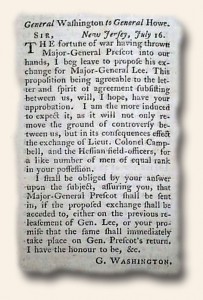
The “Gentleman’s Magazine” is a little gem packed with all the history one would want to find from the 18th century. Measuring about 5 by 8 inches and typically having about 40 pages they take up very little room in a collection. But best of all it is an accessible title, and at prices far below what would be found in comparable American & British newspapers of the same period.
There can be little excuse for holding back on buying the best events in American history if one is willing to add this famous & successful title to their collection. And there certainly will be a time when even this title will become very scarce as others discovery it as the little gem just begging to be collected.
Note: Rather than include an endless number of (annoying) links above, if you have interest in any of the topics discussed, simply go to the following link and enter the topic into the search field: www.RareNewspapers.com
Trenton as the nation’s capital in 1799…
September 13, 2013 by TimHughes · 2 Comments
A small news bit inconspicuously located on page 2 of the “Columbian Centinel” newspaper from Boston, dated October 19, 1799, struck me as being in error: “The President of the United States arrived at the seat of government, (Trenton) in good health.” Or so I thought.  While history tells us that the seat of government had moved from New York to Philadelphia to Washington, D.C. during this period, it appears in fact that the federal government did remove itself from Philadelphia (to Trenton) for a brief time in 1799 to escape the Yellow Fever epidemic in that city. But to my surprise there is very little on the internet about it. There are several sites which provide some detail about Trenton being the nation’s capital for 54 days in 1784, but just two sites have a passing reference to the 1799 event. There is no mention as to exactly when or for how long. Can anyone provide more detail? Surprisingly even the sites of the city of Trenton offer no help.
While history tells us that the seat of government had moved from New York to Philadelphia to Washington, D.C. during this period, it appears in fact that the federal government did remove itself from Philadelphia (to Trenton) for a brief time in 1799 to escape the Yellow Fever epidemic in that city. But to my surprise there is very little on the internet about it. There are several sites which provide some detail about Trenton being the nation’s capital for 54 days in 1784, but just two sites have a passing reference to the 1799 event. There is no mention as to exactly when or for how long. Can anyone provide more detail? Surprisingly even the sites of the city of Trenton offer no help.
The Traveler… a proclamation… the plague… “neat” wines…
August 19, 2013 by The Traveler · Leave a Comment
Today I traveled to London through the The Post Boy dated August 20, 1713. The issue contains a Proclamation by the Queen, calling for a New Parliament as the last Parliament had been dissolved.
There I also found the terrible news coming from Vienna concerning the plague. “The Plague now rages very much in this City; 70, 80, or more people dying of it every day… Her Majesty’s Steward having bury’d one Daughter with it, and sent another to the Pest-House, 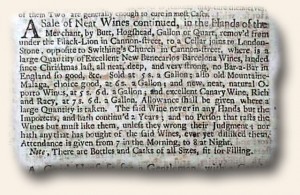 while himself and the rest of his Children are gone to perform Quarentine;… Be that as it will, a Council having been held… it was therein resolv’d, to shut out Austria and other found Provinces, and to appoint Quarentine-Houses on all our Frontiers;…”
while himself and the rest of his Children are gone to perform Quarentine;… Be that as it will, a Council having been held… it was therein resolv’d, to shut out Austria and other found Provinces, and to appoint Quarentine-Houses on all our Frontiers;…”
This also contained an interesting advertisement for “A Sale of Neat Wines…”. Now, I have seen many vine advertisements but this is the first time that I have seen wines described as “neat”. One wine is further described as “excellent Canary Wine, Rich and Racy”… and that too is an interesting description as well. Cheers!
~The Traveler
The future for air balloons…
July 19, 2013 by TimHughes · Leave a Comment
The mid to late-1780’s had much excitement about the new-found success of the hot air balloon, with various experiments and adventurous voyages commonly found in newspapers of the period. The July 14, 1784 issue of the “Massachusetts Centinel” newspaper from Boston jumped on the band-wagon and made this fanciful prediction in its newspaper:
Life expectancy over 200 years ago makes for an interesting offer…
July 12, 2013 by TimHughes · Leave a Comment
Considering that the life expectancy of the average male in the 1780’s was dramatically less than it is today, perhaps it is not surprising that this offer from General Washington was considered “…so equitable a proposal…”. Ultimately Congress settled on the full pay for five years option. This report is found in “The London Chronicle” issue of June 3, 1783:
Collecting the Revolutionary War on a budget…
March 28, 2013 by TimHughes · 2 Comments
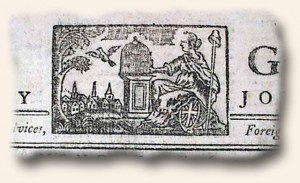 I would argue that beyond the Civil War, the era of American history which evokes the most interest among our collectors is unquestionably the Revolutionary War. With a cast of characters who still rank among the most memorable in history—Washington, Adams, Hancock, Jefferson, Henry, Franklin, Paine, and more—and a plot, which if it were not true history would serve as an excellent screenplay for an exciting movie—an oppressed, energized people seek to break free from the reigns of oppression and dominance from abroad—it is easy to see how the events of the Revolutionary War continue to intrigue and offer a foundation upon which to reflect as today’s world grapples with many of the same issues despite the 230+ years which distance us from those notable events.
I would argue that beyond the Civil War, the era of American history which evokes the most interest among our collectors is unquestionably the Revolutionary War. With a cast of characters who still rank among the most memorable in history—Washington, Adams, Hancock, Jefferson, Henry, Franklin, Paine, and more—and a plot, which if it were not true history would serve as an excellent screenplay for an exciting movie—an oppressed, energized people seek to break free from the reigns of oppression and dominance from abroad—it is easy to see how the events of the Revolutionary War continue to intrigue and offer a foundation upon which to reflect as today’s world grapples with many of the same issues despite the 230+ years which distance us from those notable events.
And what could be better than experiencing those events just as those who lived through them? Newspapers offer that opportunity. Genuine issues, once held and read by those who lived through those turbulent days before being relegated to the back shelves of libraries, are now part of the inventory of Hughes Rare & Early Newspapers. And at prices which might surprise many (see Revolutionary War issues for $60 and under), as a hobby which is relatively unknown to the collecting world has yet to cause demand and scarcity to drive prices beyond the means of the average collector. Of course, there are still many that fall into the category of what we refer to as, “The Best of the Best – Revolutionary War Edition“.
Of significance is that British titles, which offer excellent coverage of all American events given their role in attempting to placate the demands of the Americans while maintaining control of their colonies, allow ownership of battle reports of the war for under $100, with 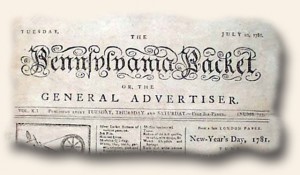 some very notable events in the $200-$300 range. American newspapers remain among the most desired but their scarcity is reflected in their prices. With a collection of the “Pennsylvania Evening Post” which included the Declaration of Independence bringing $600,000 in auction recently, it would amaze many that the same document is available in London’s “Gentleman’s Magazine” issue of August, 1776 (took news 3-4 weeks to traverse the Atlantic) for under $4,000. Other disproportionate prices between British and American newspapers entice many to gravitate to the British titles while prices and availability remain attractive.
some very notable events in the $200-$300 range. American newspapers remain among the most desired but their scarcity is reflected in their prices. With a collection of the “Pennsylvania Evening Post” which included the Declaration of Independence bringing $600,000 in auction recently, it would amaze many that the same document is available in London’s “Gentleman’s Magazine” issue of August, 1776 (took news 3-4 weeks to traverse the Atlantic) for under $4,000. Other disproportionate prices between British and American newspapers entice many to gravitate to the British titles while prices and availability remain attractive.
The “London Chronicle” is one of the better British titles in reporting the Revolutionary War. From the Battle of Lexington and Concord, to Bunker Hill, Battle of New York, Saratoga, Washington crossing the Delaware, treason of Benedict Arnold, Guilford Court House, to Cornwallis’ surrender at Yorktown, this newspaper offers coverage which equals the American newspaper accounts. In fact many British reports were taken verbatim from American newspapers. Of equal quality in report news of the day was the “Edinburgh Evening Courant” from Scotland as I have found all events of the Revolutionary War to be reported in this title as well. Other UK titles which covered the war include “The Glocester Journal”, “Aris’s Birmingham Gazette”, the “Edinburgh Advertiser” and the “Glasgow Mercury” to name a few.
But perhaps the best and most available title of the Revolutionary War period would be the “Gentleman’s Magazine” from London, it having a long printing history from 1731 to the 20th century so it encompasses not just the Revolutionary War in great detail by the entire scope of American history. As an added treat this title typically included one of more plates within each issue, which included maps as well. And during the years of the Revolutionary War were found many maps of American colonies, battle sites as well as large foldout maps showing the entire scope of the united colonies at that time. The maps alone have found a keen interest among collectors, separate from the issues in which they were stored for over 200 years. As is true with the British titles mentioned, “Gentleman’s” included all notable events and documents, including the Articles of Confederation, the Causes and Necessity For Taking Up Arms, all major battles of the war thru the treaty between Washington and Cornwallis, and even the document by King George III which officially ended the war. And all the major names of the war from both the British and American sides have found their way into the pages of “Gentleman’s Magazine”.
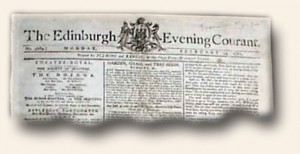 American titles are available as well. Some of the more rare would be those from the South which are virtually impossible to find, and when they do surface their prices are beyond the means of most collectors. Some of the more commonly found titles would be the “Pennsylvania Evening Post” from Philadelphia, the “Pennsylvania Ledger” “Boston Gazette” (which featured an engraving by Paul Revere in the masthead), “The Pennsylvania Gazette” and “Pennsylvania Packet” among others. And dipping back a few years before the outbreak of the war, when tensions were building with much evidence in the newspapers of the day, the “Pennsylvania Chronicle” and the “Boston Chronicle” offer excellent insight into events of the day from the years 1767-1769 for under $200 for most issues.
American titles are available as well. Some of the more rare would be those from the South which are virtually impossible to find, and when they do surface their prices are beyond the means of most collectors. Some of the more commonly found titles would be the “Pennsylvania Evening Post” from Philadelphia, the “Pennsylvania Ledger” “Boston Gazette” (which featured an engraving by Paul Revere in the masthead), “The Pennsylvania Gazette” and “Pennsylvania Packet” among others. And dipping back a few years before the outbreak of the war, when tensions were building with much evidence in the newspapers of the day, the “Pennsylvania Chronicle” and the “Boston Chronicle” offer excellent insight into events of the day from the years 1767-1769 for under $200 for most issues.
Regardless of your interest in the Revolutionary War, whether it be the famous names that came to prominence, the battles of the war, or a focus on a singular event or locality, genuine newspapers of the day are available for the collector. It is a hobby with limitless possibilities, and offers a unique opportunity to literally hold history in your hands.
The 1600’s and 1700’s on a budget…
March 25, 2013 by TimHughes · Leave a Comment
A genuine collectible, over 300 years old, for $60 or less. Is there a field of collecting today which has items of such age– in nice condition–for $60? The hobby of collecting rare & historic newspapers likely sits at the top of what must 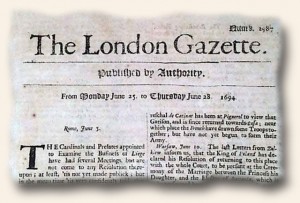 be a very short list. And such prices, along with tremendous availability of titles & content, are part of the intrigue of this fascinating hobby which remains unknown to almost everyone. And this, in large part, is the reason prices are outrageously low in comparison to the relative rarity of other collectibles. While issues do run the gamut price-wise from newsbooks (at the upper end) to coffeehouse newspapers (typically at the lower end), it is a fascinating field for the historical hobbyist on a budget ($20 and under).
be a very short list. And such prices, along with tremendous availability of titles & content, are part of the intrigue of this fascinating hobby which remains unknown to almost everyone. And this, in large part, is the reason prices are outrageously low in comparison to the relative rarity of other collectibles. While issues do run the gamut price-wise from newsbooks (at the upper end) to coffeehouse newspapers (typically at the lower end), it is a fascinating field for the historical hobbyist on a budget ($20 and under).
The ‘London Gazette‘ is the world’s oldest continually published newspaper, having begun in 1665 and is still publishing today. With such historical depth you would expect to find virtually every major event in world history within its pages, and you would be right. The Great Plague and Great London Fire, William Penn being granted land in the New World, the death of noted pirate Captain Kidd, the battles of the French & Indian War and Revolutionary War and so much more are found in not only this title but other newspapers of the era. First reports of such notable events can sell in the thousands of dollars, but an interesting facet of this hobby is that follow-up reports of a few days later can fall well within the comfort level of the average collector.
Both age and graphic appeal come together in the London ‘Post-Boy‘ newspaper, with issues from the 1718-1725 period featuring two ornate engravings in the masthead in addition to a very decorative first letter of the text. Add to this the relative small size of this single sheet newspaper and you have a terrific item for display for under $55.
With American newspapers not beginning until the first decade of the 18th century (one title was published in 1690 but lasted just one day), and most American newspapers through the Revolutionary War being very rare, British titles are an excellent source for collecting all the notable events not only in American history, but in world history as well. And the reporting was often extensive, for remember that the colonies were part of Great Britain through 1776.
The ‘London Chronicle’ was a popular British newspaper which documented amongst its pages virtually all American events since its founding during the French & Indian War. Yet another periodical, the ‘Gentleman’s Magazine‘, is an 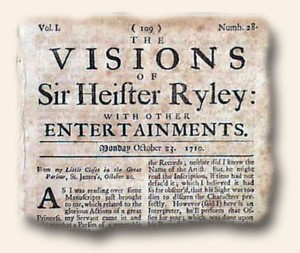 excellent source for period reports of American events since its beginning in 1731, and one of its features was the printing of maps of all corners of the globe, many of which show North America and specific colonies. From James Oglethorpe’s settling the colony of Georgia, to Ben Franklin‘s famous kite experiment, installation of the Liberty Bell, the enactment & repeal of the hated Stamp Act, all events of the Revolutionary War, to the mutiny on the Bounty & so much more, the ‘Gentleman’s Magazine’ offers a terrific repository of American and world history at very affordable prices. Plus, there are reports of Colonel George Washington from 1754 when he was just 22 years old and relatively unknown, and for the music buffs there are works by the composers Hayden, Handel, and death reports of Mozart and Beethoven within its pages. The early battles of Napoleon & other European reports are logically found in this title as well.
excellent source for period reports of American events since its beginning in 1731, and one of its features was the printing of maps of all corners of the globe, many of which show North America and specific colonies. From James Oglethorpe’s settling the colony of Georgia, to Ben Franklin‘s famous kite experiment, installation of the Liberty Bell, the enactment & repeal of the hated Stamp Act, all events of the Revolutionary War, to the mutiny on the Bounty & so much more, the ‘Gentleman’s Magazine’ offers a terrific repository of American and world history at very affordable prices. Plus, there are reports of Colonel George Washington from 1754 when he was just 22 years old and relatively unknown, and for the music buffs there are works by the composers Hayden, Handel, and death reports of Mozart and Beethoven within its pages. The early battles of Napoleon & other European reports are logically found in this title as well.
While American newspapers of the Revolutionary War and before are generally pricey, ranging in the $400 – $1000+ range, two notable exceptions exist being the ‘Boston Chronicle’ and the ‘Pennsylvania Chronicle’, both from the 1768-1769 years. Because their circulation was widespread they are among the more commonly held colonial titles by institutions, & consequently come on the market when libraries convert from hard copy to microfilm or digital. They detail the entire spectrum of American life from just before the Revolutionary War while providing an interesting perspective on American politics during those critical years. Complete, genuine issues are typically available for under $200.
American newspapers from after the American Revolution become more available and at dramatically lower prices while still containing a wealth of notable content on the founding years of the federal government. The ‘Pennsylvania Packet’ of Philadelphia was one of the more successful titles, and was the very first to print the Constitution of the United States. While that issue, September 19, 1787, ranks well into six figures,  dates surrounding it are typically found in the $45 – $80 range and offer a perspective of life in the city where and when the Constitution was being created. The ‘Columbian Centinel’ from Boston was perhaps the most successful title in 18th century America and its pages document the complete scope of America politics and life from 1785 thru Washington’s election and inauguration to his death just weeks before the end of the century.
dates surrounding it are typically found in the $45 – $80 range and offer a perspective of life in the city where and when the Constitution was being created. The ‘Columbian Centinel’ from Boston was perhaps the most successful title in 18th century America and its pages document the complete scope of America politics and life from 1785 thru Washington’s election and inauguration to his death just weeks before the end of the century.
Other 18th century American titles which are within the budgets of even the most modest collectors are the ‘Connecticut Courant’, ‘Dunlap’s American Daily Advertiser’, ‘Gazette of the United States’, the ‘Massachusetts Spy’, and ‘The Herald, A Gazette For The Country’ and others. Nice issues from the formative years of the federal government can be had for under $50 each.
While first reports of the most historic events of the 17th and 18th centuries will always command top dollar among the most savvy of collectors, the hobby of collecting rare newspapers offers a tremendous wealth of issues at surprisingly low prices, while at the same time offering fascinating content on life only known to others through history books. And this hobby is one that offers the entire spectrum of political, economic, and social history to every collector. What other hobby can make that claim? But perhaps most importantly, this hobby let’s you hold—quite literally—history in your hands.
Summing up the Revolutionary War through 1779…
January 25, 2013 by TimHughes · Leave a Comment
The front page of “The Edinburgh Advertiser“, July 23, 1779, has a great letter (see below) signed by “An Englishman” which pretty much sums up the Revolutionary War through the mid-point of 1779. Never before have I seen a more accurate appraisal of the situation in so few words.
Patrick Henry bio in the Citizen Soldier… 1840…
January 16, 2013 by GuyHeilenman · Leave a Comment
The following is a 2nd look at a post from a few years ago. We’ve updated the images to make the text easier to read. Please enjoy.
Although much has been written about Patrick Henry, a December 18, 1840 issue of the Citizen Soldier, Vermont, gives us a glimpse as to how he was viewed within less than 50 years of his death. The end of the biography has a few extra treats as well. Although quite lengthy… it is certainly worth the read:
The Traveler… a duel… a reminder…
December 3, 2012 by The Traveler · Leave a Comment
 Today I traveled back to England through The Post Boy dated December 4, 1712. There I found that the Duke of Hamilton, who was about to be Ambassador, had fought a duel with Lord Mohun, but “… was kill’d upon the Spot, as well as his Adversary…”.
Today I traveled back to England through The Post Boy dated December 4, 1712. There I found that the Duke of Hamilton, who was about to be Ambassador, had fought a duel with Lord Mohun, but “… was kill’d upon the Spot, as well as his Adversary…”.
Also within this issue are two different references to the “Pestilential Sickness” in which two women from Presbourg had recently died and there was great fear of it spreading. The other article spoke of “necessary Orders” begin given to prevent the spreading of the disease.
I realize that we are not dealing with pestilential issues, but just a reminder that if you have not yet received your flu shot, you still have time!
~The Traveler


